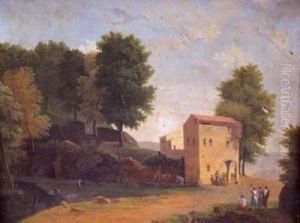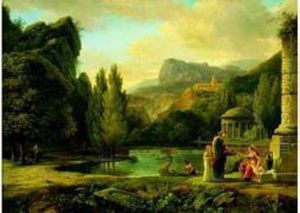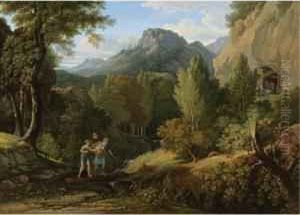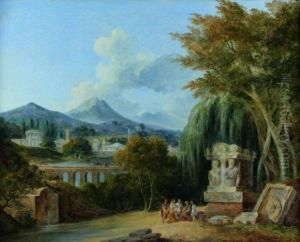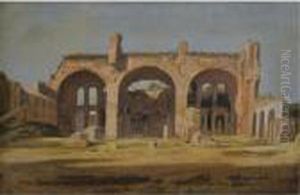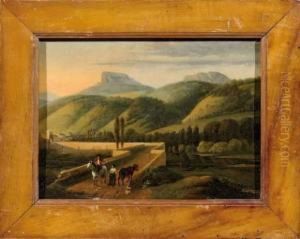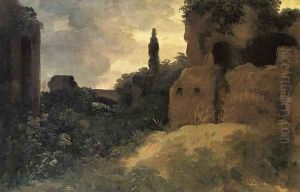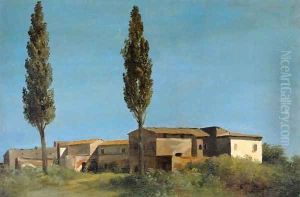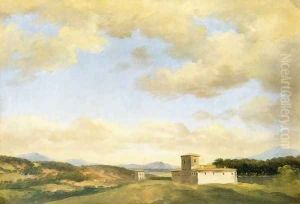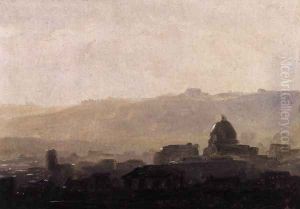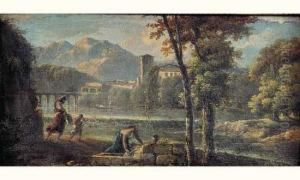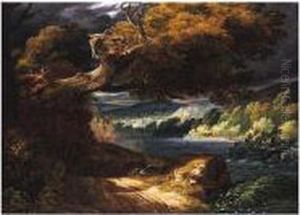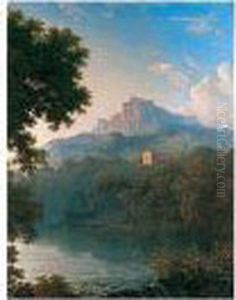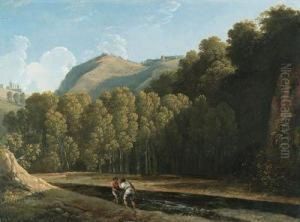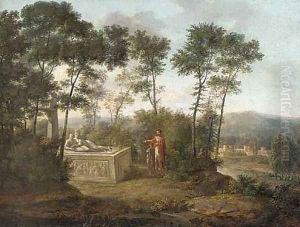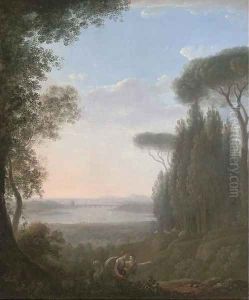Pierre-Henri de Valenciennes Paintings
Pierre-Henri de Valenciennes was a French painter who was born on December 6, 1750, in Toulouse, France. He is best known for his advancements in the genre of landscape painting and for being a pivotal figure in the development of plein air (outdoor) painting. His work laid the groundwork for the Barbizon school and Impressionism, which would fully embrace painting in the open air later in the 19th century.
Valenciennes studied under the landscape painter Gabriel-François Doyen, and later with the history painter Jean-Joseph Taillasson. He moved to Rome around 1778, where he was deeply influenced by the work of classicist landscape painters such as Claude Lorrain and Nicolas Poussin. Valenciennes' art was characterized by its classical approach, often depicting idealized landscapes with historical or mythological figures.
While in Rome, he began advocating the practice of painting landscapes from nature to accurately capture the effects of light and atmosphere, which was a significant departure from the studio-based landscape traditions of the time. In 1787, he returned to Paris and became a member of the Royal Academy. He was appointed as a professor at the Academy in 1812.
Valenciennes' most significant contribution to art was his treatise, 'Éléments de perspective pratique à l'usage des artistes', published in 1799-1800, which emphasized the importance of outdoor landscape painting. This text influenced a generation of landscape painters who would go on to develop the plein air techniques that defined much of Western landscape painting in the 19th century.
Pierre-Henri de Valenciennes passed away on February 16, 1819, in Paris. Despite his death, his teachings and artistic approach to landscape painting continued to resonate with artists, and his legacy was instrumental in shaping the course of modern landscape art.

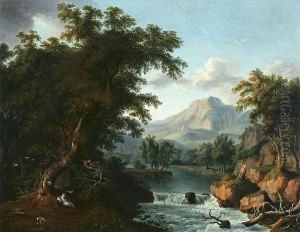





![Paysage Arcadien Paysage Avec
Diane Au Bain Surprise Par Acteon [ ; Italian Landscapes ; Oil On
Original Canvas ; A Pair]](https://www.niceartgallery.com/imgs/1268294/s/pierrehenri-de-valenciennes-paysage-arcadien-paysage-avec-diane-au-bain-surprise-par-acteon-italian-landscapes-oil-on-original-canvas-a-pair-c79bab4a.jpg)

